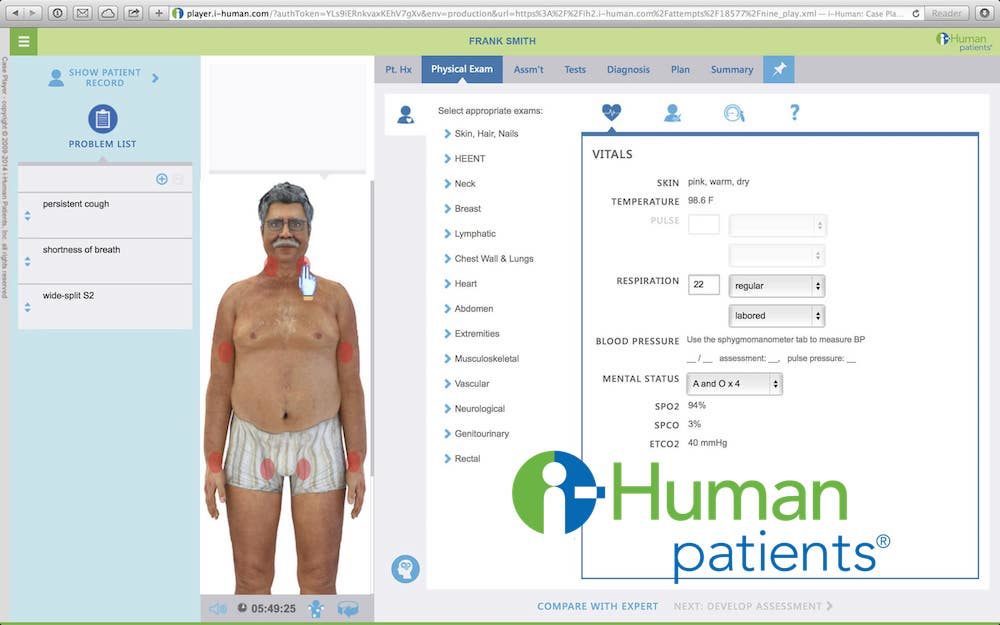Introduction
Whether you’re a nursing student, medical student, or healthcare practitioner in training, you’ve likely encountered iHuman case studies as part of your curriculum. These interactive simulations are designed to sharpen your clinical reasoning and diagnostic skills. If you’re looking for iHuman case study answers, this guide is here to help. Not by giving you shortcuts, but by offering valuable summaries, tips, and approaches for each case.
Let’s discuss how to approach these simulations successfully and review some of the most common iHuman case studies used across nursing and medical programs.
What is iHuman and How Does it Work?
iHuman is a virtual patient simulation platform developed by Kaplan. It enables learners to:
- Take a focused history
- Conduct a physical exam
- Order and interpret diagnostic tests
- Formulate a differential and final diagnosis
- Recommend treatment
These case studies span various disciplines including pediatrics, adult medicine, geriatrics, women’s health, and psychiatry. Each scenario mimics real-world clinical practice to promote evidence-based learning and critical thinking.
Some of the most effective history taking techniques include:
- The patient interview is your first priority to gather essential information
- Begin with open-ended questions by allowing the virtual patient to express concerns in their own words
- Use the OLDCARTS Framework: Onset, Location, Duration, Characteristics, Aggravating/Alleviating factors, Related symptoms, Treatment, Severity.
- Explore Past Medical History: previous conditions can provide valuable diagnostic clues
- Document Family History: identify hereditary risk factors.
- Note Social History: Lifestyle factors often influence health conditions
- Review Systems Systematically: Conduct a comprehensive review of systems
- Listen for Red Flags:Pay attention to concerning symptoms requiring urgent attention.

How to Approach iHuman Case Studies
Before jumping into the answers, it’s crucial to understand how to properly approach an iHuman case:
- Be systematic: Start with a chief complaint, then gather a detailed HPI, PMH, medications, and social history.
- Use your physical exam tools: Each click and choice should be purposeful.
- Order tests thoughtfully: Use clinical judgment, not guesswork.
- Construct a differential diagnosis: Just like real clinical settings, rarely is it obvious right away.
- Reflect and learn: After each case, thoroughly review feedback provided by the platform.
iHuman Case Study Answers Overview
Below is a categorized overview of common iHuman cases. This is not a cheat sheet—but a learning resource to guide your thinking and help you prepare effectively.
Adult & Geriatric Cases
- Mary Barkley ihuman case study answers: Presents with wheezing and shortness of breath. Suspected asthma exacerbation. Focus on inhaler use, triggers, and peak flow readings.
- Brian Foster ihuman case study answers: A classic chest pain case pointing toward myocardial infarction (MI). EKG and troponin are critical here.
- Esteban Garcia ihuman case study answers: Complains of dyspnea and productive cough. Likely COPD exacerbation, requiring bronchodilator therapy and possibly corticosteroids.
- Jared Griffin ihuman case study answers: Young adult managing Type 1 Diabetes. Case emphasizes insulin therapy, blood glucose monitoring, and DKA prevention.
- James Harden ihuman case study answers: Presents with hypertension and chest discomfort. Important to differentiate angina vs hypertensive emergency.
Pediatric iHuman Cases
- Danny Rivera ihuman case study answers: A 5-year-old with barking cough and respiratory distress. Suggestive of croup.
- Emma Ryan ihuman case study answers: Pediatric rash that turns out to be measles. Assess immunization status and consider isolation precautions.
- Ana Rojas ihuman case study answers: Toddler with fever, vomiting, and dry mucous membranes—points to dehydration.
- Olivia Jones ihuman case study answers: Ear pain and irritability likely due to otitis media.
- Willie Washington ihuman case study answers: Presents with asthma exacerbation, emphasizing inhaler use and asthma action plans.
- Tamika Washington ihuman case study answers: Complains of sore throat—the case differentiates between viral pharyngitis and strep throat.
Women’s Health iHuman Cases
- Cindy Kramer ihuman case study answers: Presents with dysuria and vaginal discharge—consider UTI vs STI.
- Ashley Clark ihuman case study answers: Early signs of pregnancy, explores prenatal care and lifestyle counseling.
- Lisa Caputo ihuman case study answers: Reports irregular menstruation, possibly related to PCOS or hormonal imbalances.
Psychiatric & Behavioral Cases
- Tina Jones ihuman case study answers: Addresses depression and substance use disorder. Important for mental health screenings (PHQ-9) and motivational interviewing.
- Maria Sanchez ihuman case study answers: Presents with anxiety symptoms, explore GAD vs situational anxiety and treatment options.
Musculoskeletal iHuman Cases
- Rita Gold ihuman case study answers: Case of arthritis. Discusses management of RA vs OA, lab tests, and physical therapy.
- Joseph Thomas ihuman case study answers: Presents with low back pain, emphasizing red flags and differential (strain vs herniation vs spinal stenosis).
- Raymond Carter ihuman case study answers: Complains of knee pain, highlighting assessment of ligament injuries and imaging use.
Cardiac & Respiratory Cases
- Frank Martin ihuman case study answers: Presents with congestive heart failure symptoms—weight gain, edema, shortness of breath.
- Michael Johnson ihuman case study answers: Long-term smoker with chronic cough, explore COPD management and smoking cessation.
- Monica Rivera ihuman case study answers: Discusses asthma maintenance therapy and identifying poorly controlled asthma.
Tips for Answering iHuman Case Studies
To make the most of your simulations:
- Use the SOAP format: Structure your assessments clearly
- Read rationales: Understand why some answers are right and others are not
- Practice clinical reasoning: Always ask why you’re ordering or diagnosing something
FAQs about iHuman Case Study Answers
Q: Can I find full answers to iHuman cases online?
A: Yes. We provide ihuman case study answers by doing the ihuman case studies to students who need help. You simply place an order here or simply whatsapp +1(914) 201-8471.
Q: Is it cheating to use a guide like this?
A: No, this guide supports critical thinking, not memorization. It doesn’t give you the final answers but helps you think like a clinician.
Q: What’s the best way to prepare for iHuman?
A: Review your coursework, use clinical reasoning resources, and approach each case like a real patient interaction.
Conclusion
Mastering iHuman case studies is about more than just getting the right answers—it’s about developing the mindset and skills of a real healthcare provider. Use this guide as a clinical companion, a study buddy, and a confidence booster. Work through each case, reflect on your decisions, and most importantly, never stop learning.




